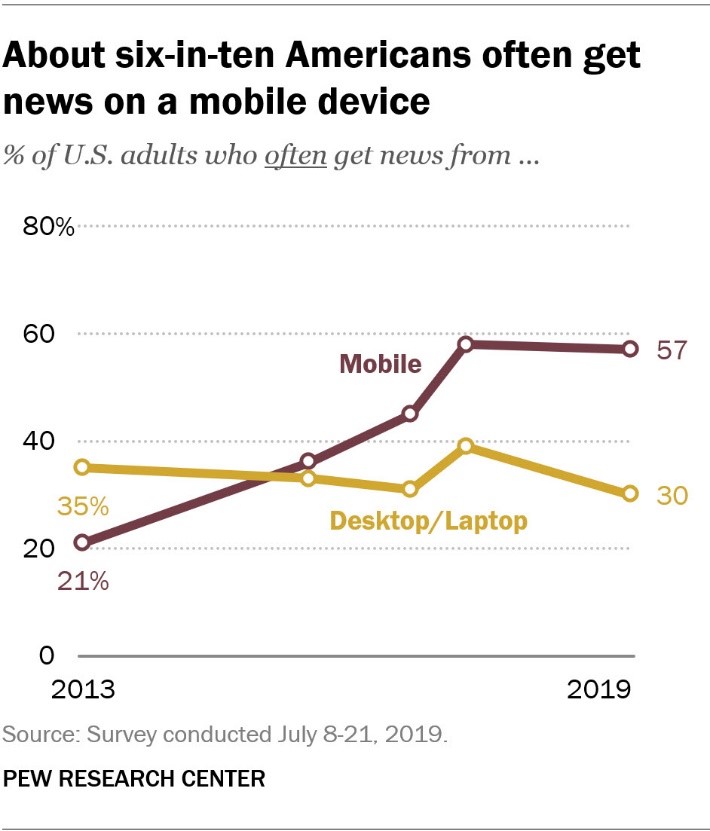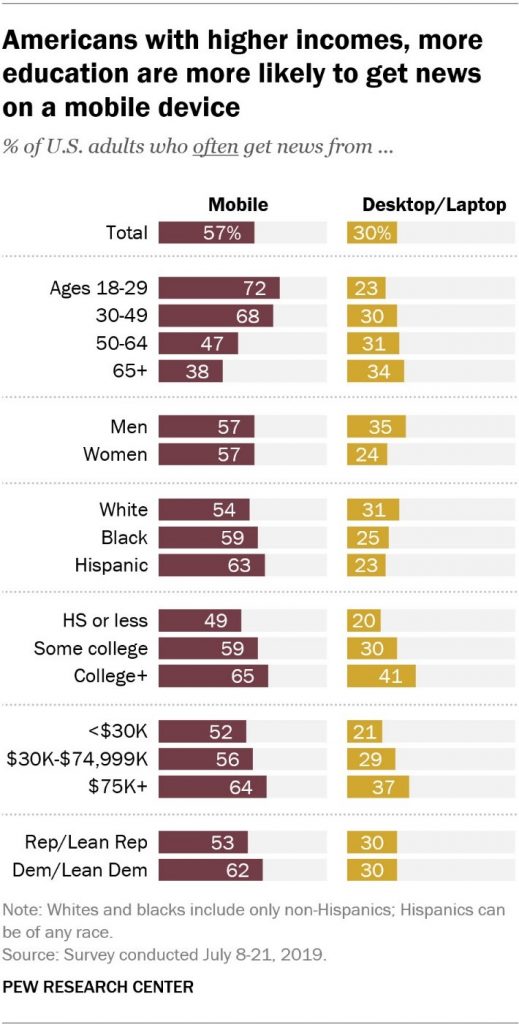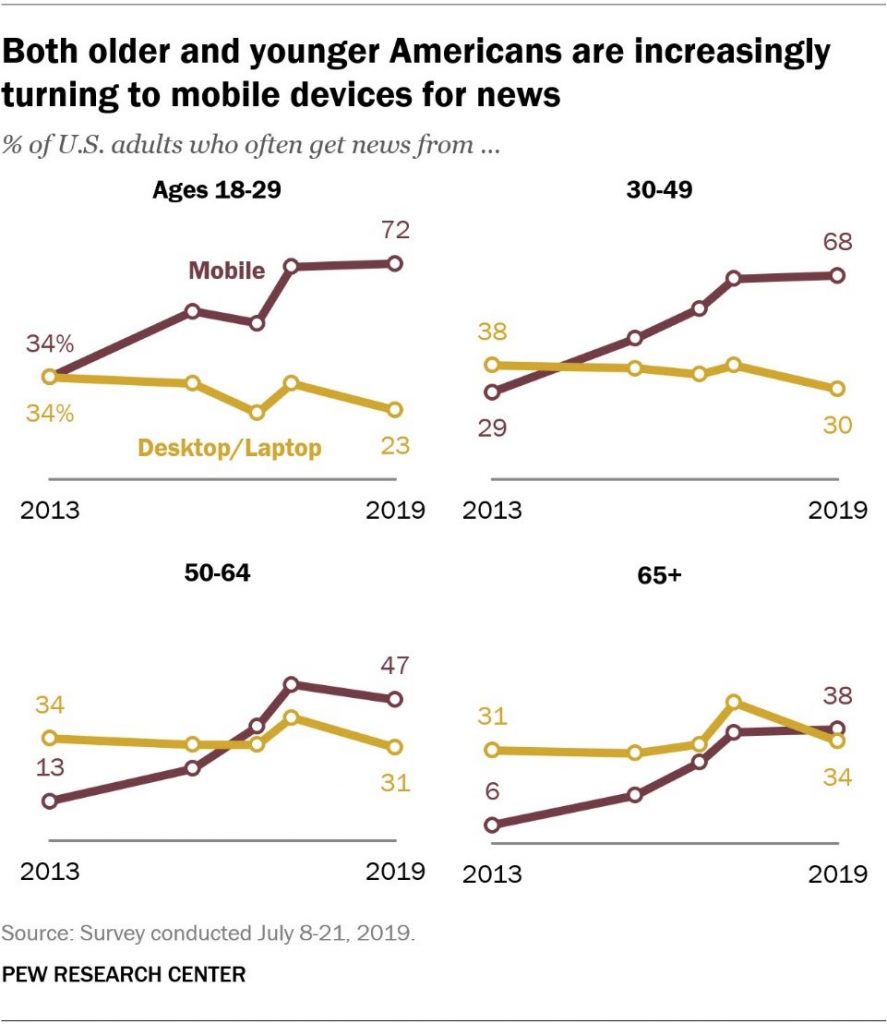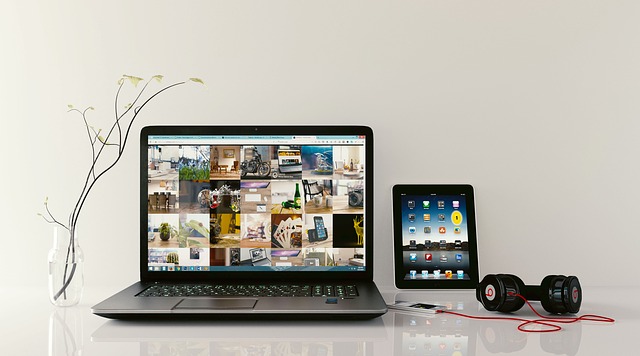Americans favor mobile devices over desktops and laptops for getting news
Americans continue to be more likely to get news through mobile devices than through desktop or laptop computers. Roughly six-in-ten U.S. adults (57%) often get news this way, compared with 30% who often do so on a desktop or laptop computer, according to a Pew Research Center survey.

The share of Americans who often get news on a mobile device is more than double the 21% who did so in 2013, the first time we asked this question. At the same time, the portion of Americans who often get news on a desktop or laptop computer has remained relatively stable during this period.
Mobile also outpaces desktop when it comes to more occasional use of digital devices for news. Eight-in-ten U.S. adults get news on mobile devices either sometimes or often. By comparison, six-in-ten Americans get news using a desktop or laptop computer at least sometimes. Overall, a majority of U.S. adults (82%) get news online at least sometimes, whether from mobile devices or desktop or laptop computers.
Younger adults are far more likely than their elders to often get news on a mobile device. About seven-in-ten (72%) adults ages 18 to 29 often get news this way, compared with 38% among those ages 65 and older. Conversely, those 65 and older are more likely to often get news on a desktop or laptop computer than those ages 18 to 29 (34% vs. 23%).

Race and partisanship also play a role in mobile news use. For example, about six-in-ten Hispanic adults (63%) often get news through a mobile device, compared with 54% of whites. The opposite is true when it comes to getting news on desktop or laptop computers (23% among Hispanic adults vs. 31% of whites). Black adults fall between Hispanic and white adults on this question.
Meanwhile, roughly six-in-ten Democrats and Democratic-leaning independents (62%) often get news on a mobile device, compared with 53% of Republicans and Republican leaners. When it comes to desktop news use, there are no major differences between Democrats and Republicans.
Those with more formal education and higher incomes are more likely to get news on both mobile and desktop or laptop computers. U.S. adults with a college degree, for instance, are more likely to often get news on mobile than those with a high school education or less (65% vs. 49%).
Men and women get news on mobile at similar rates, but men are more likely than women to often get news on a desktop or laptop (35% vs. 24%).

The adoption of mobile devices for news has been driven by both younger and older Americans, with some of the sharpest growth in recent years coming among those ages 65 and older.
Roughly four-in-ten Americans ages 65 and older (38%) often get news from a mobile device, around six times the share in 2013. In fact, people in this age group are now roughly as likely to get news from a mobile device as they are to get it from a desktop or laptop (38% vs. 34%).
The share of Americans ages 18 to 29 who often get news from a mobile device has more than doubled since 2013, increasing from 34% then to 72% today. During the same period, the share of Americans ages 18 to 29 who often get news from a desktop or laptop computer has decreased 9 percentage points (from 34% in 2013 to 23% in 2019). The two middle age groups, those ages 30 to 49 and 50 to 64, have followed a similar pattern.
Lire : Pew Research du 19 novembre










































